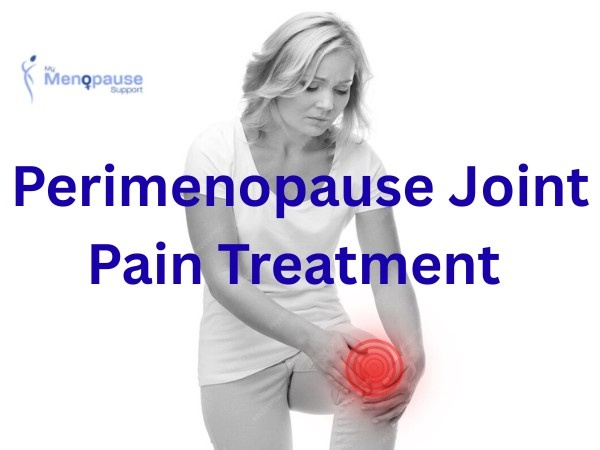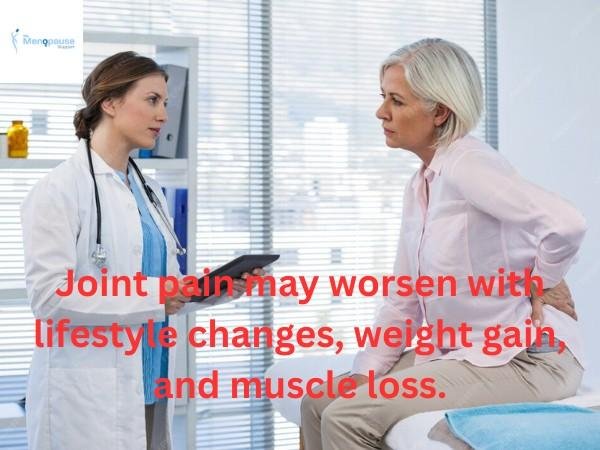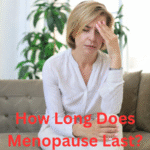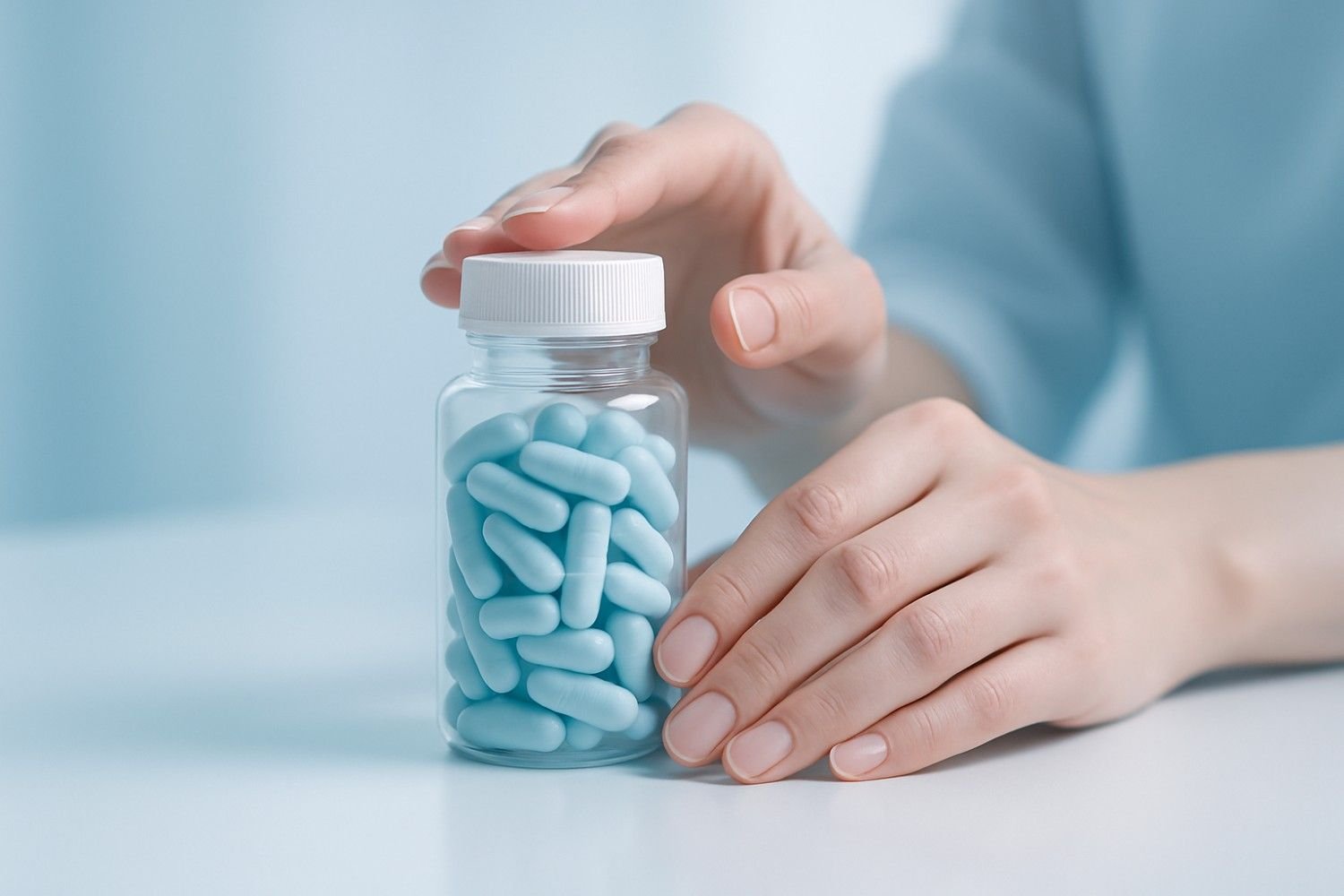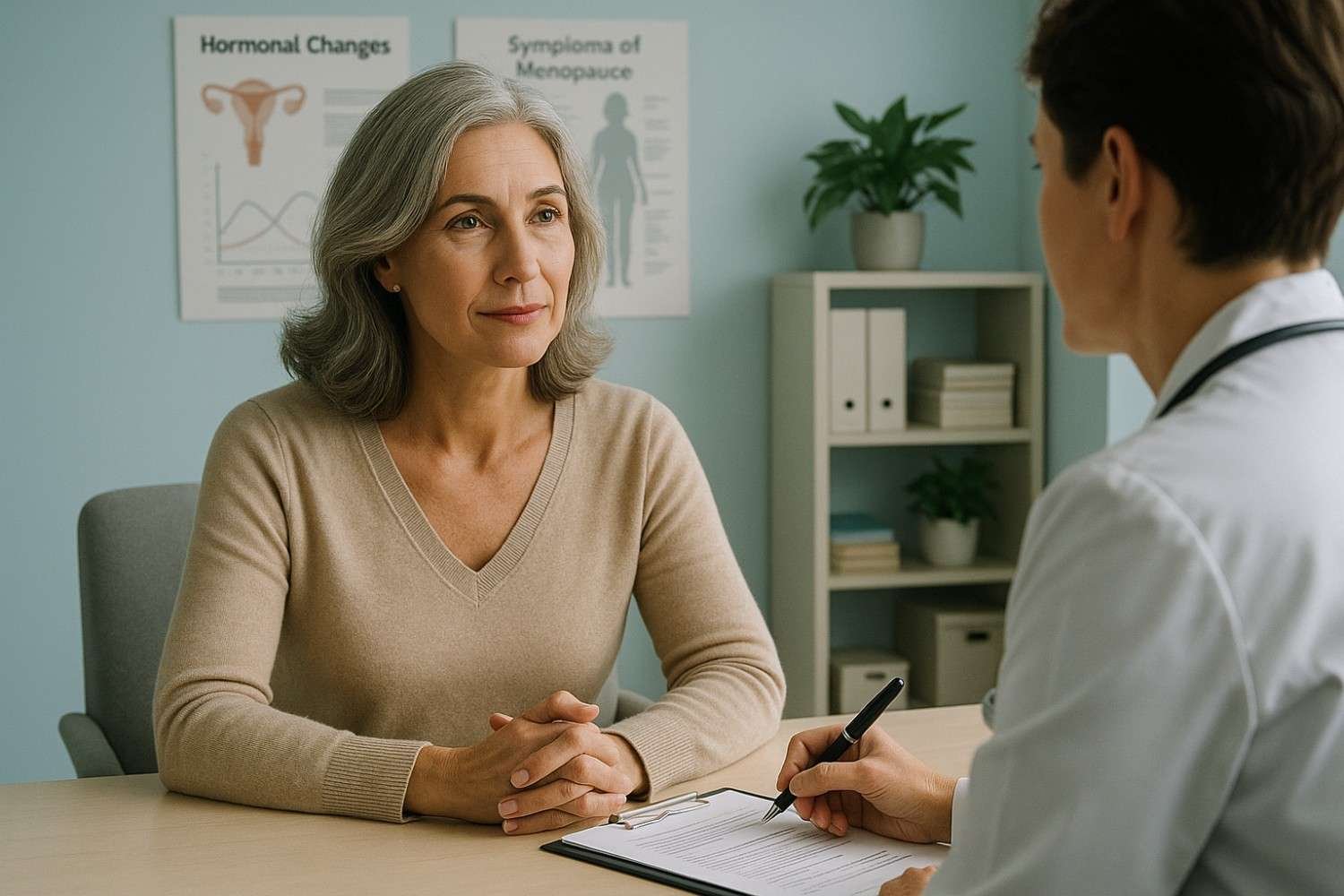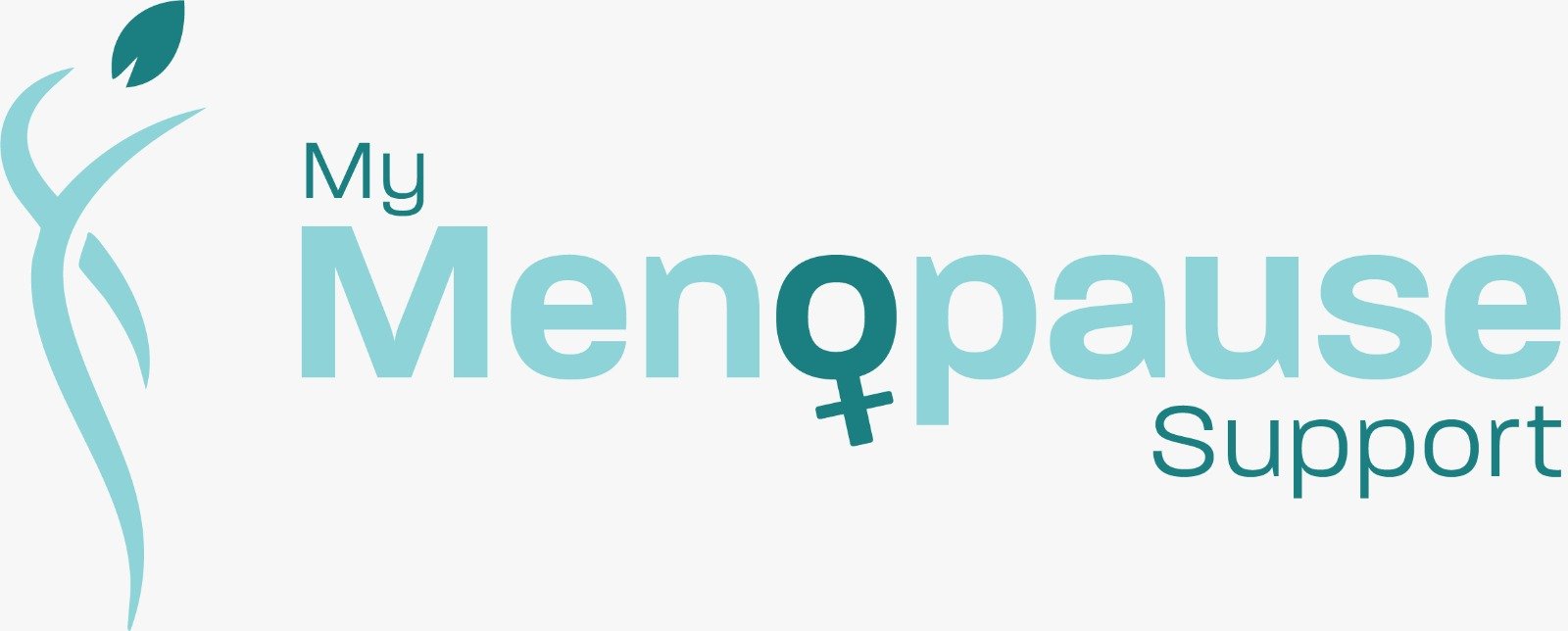If you’re dealing with aches, stiffness, or nagging soreness—and you’re going through perimenopause—chances are you’re not alone. Many people around this stage notice joints and muscles behaving differently. The hormonal changes your body experiences can affect more than just moods or periods—they can also impact joints, bones, and general mobility. The good news? There are several approaches available in the UK to tackle “perimenopause joint ”pain”—from medical treatments to lifestyle changes. This article explores what works, what to consider, and how to build a plan for relief.
What is Perimenopause — and Why Can It Lead to Joint Pain?
Hormone decline and its impact on joints
- During perimenopause—the transitional period before your periods stop completely—hormone levels begin to shift. In particular, estrogen (and sometimes testosterone) drops or fluctuates.
- Oestrogen plays a protective role in joints. It helps keep joint tissues, cartilage, and bone healthy—reducing inflammation and maintaining flexibility. When estrogen falls, joints may feel stiffer, more achy, or more prone to inflammation.
Muscles, bones and joint tissue may shift
- As hormone levels shift, muscle mass and bone density can be affected. Loss of muscle strength reduces joint support, while lower bone density increases risk of bone and joint problems.
- Cartilage, ligaments, and joint fluid—all part of what makes joints work smoothly—may also respond to hormonal decline by weakening or becoming more vulnerable, which can lead to discomfort or pain.
So what you feel as “aches and pains” may not be random—it’s often linked to the body’s changing internal environment.
Can Perimenopause Actually Cause Joint Pain?
High occurrence of joint/muscle pain during menopause transition
- Many health sources note that a significant number of people going through the menopause transition—including perimenopause—experience musculoskeletal symptoms. Up to six in ten may report joint or muscle pain.
- According to medical summaries, lowered estrogen is associated with increased risk of joint pain, stiffness, and, in some cases, increased risk of osteoarthritis or bone and joint degeneration.
If you’re dealing with aches, stiffness, or nagging soreness—and you’re going through perimenopause—chances are you’re not alone. Many people around this stage notice joints and muscles behaving differently. The hormonal changes your body experiences can affect more than just moods or periods—they can also impact joints, bones, and general mobility. The good news? There are several approaches available in the UK to tackle “perimenopause joint” pain—from medical treatments to lifestyle changes. This article explores what works, what to consider, and how to build a relief plan.
What is perimenopause-and why can it lead to joint pain?
Hormone decline and its impact on joints
- During perimenopause—the transitional period before your periods stop completely—hormone levels begin to shift. In particular, oestrogen (and sometimes testosterone) drops or fluctuates.
- Oestrogen plays a protective role in joints. It helps keep joint tissues, cartilage, and bone healthy—reducing inflammation and maintaining flexibility. When oestrogen falls, joints may feel stiffer, more achy, or more prone to inflammation.
Muscles, bones, and joint tissue may shift
- As hormone levels shift, muscle mass and bone density can be affected. Loss of muscle strength reduces joint support, while lower bone density increases the risk of bone and joint problems.
- Cartilage, ligaments, and joint fluid—all part of what makes joints work smoothly—may also respond to hormonal decline by weakening or becoming more vulnerable, leading to discomfort or pain.
So what you feel as “aches and pains” may not be random—it’s often linked to the body’s changing internal environment.
Can Perimenopause Actually Cause Joint Pain?
High occurrence of joint/muscle pain during menopause transition
- Many health sources note that a significant number of people going through the menopause transition—including perimenopause—experience musculoskeletal symptoms. Up to six in ten may report joint or muscle pain.
- According to medical summaries, lowered oestrogen is associated with increased risk of joint pain, stiffness, and, in some cases, increased risk of osteoarthritis or bone and joint degeneration.
Joint pain may worsen with lifestyle changes, weight gain, and muscle loss.
- It’s often not just hormones alone. Factors such as loss of muscle mass, weight gain (every day during the menopausal transition), reduced physical activity, or age-related wear and tear can worsen joint pain.
- In many cases, joint pain may begin during perimenopause and persist through menopause and even post-menopause, especially if preventative care is not taken.
So yes—science and women’s health organizations recognize perimenopause as a time when joint pain becomes common, often triggered by hormonal decline but worsened by other age- and lifestyle-related factors.
What Medical Treatments Are Available in the UK?
Hormone Replacement Therapy (HRT)
In the UK, the primary established medical treatment for menopause and perimenopause symptoms is Hormone Replacement Therapy (HRT). It works by restoring declining hormone levels (especially oestrogen), which can relieve many menopause-related symptoms—including joint and muscle pain.
Several forms of HRT exist:
- Transdermal skin patches (changed periodically)
- Gels or sprays are applied to the skin.
- Oral tablets
- Progesterone is given as tablets—especially if you still have a womb—or via an intrauterine system (IUS/coil) in some cases.
- For some women, HRT may also include small doses of testosterone (especially in cases where libido, energy, or mood are affected), although this is less common.
Benefits of HRT for joint pain and overall menopausal symptoms
- HRT can help reduce inflammation, ease joint and muscle aches or stiffness, and improve bone health—mitigating the risks of bone loss or joint degeneration linked to declining oestrogen levels.
- Many women report improved mobility, less daily pain, and better energy after a few months on HRT.
- HRT can also complement other menopause-related symptom relief—such as improved sleep, better mood, and more stable energy—which, in turn, helps manage joint pain by encouraging more activity, better sleep, and better stress management.
Non-hormonal medical and over-the-counter options
If HRT isn’t suitable or preferred, there are other ways to manage joint pain:
- Over-the-counter painkillers (e.g., simple painkillers, NSAIDs like ibuprofen) can help ease discomfort and reduce inflammation.
- Topical anti-inflammatory gels or creams applied to painful joints may relieve stiffness or soreness.
These approaches don’t fix hormonal causes but can help manage pain symptoms or flare-ups, especially if joint pain is occasional or mild.
Lifestyle, Self-Care & Natural Approaches That Help
Treating perimenopause joint pain isn’t only about medicine. A big part of managing and possibly reducing pain lies in lifestyle—physical activity, diet, self-care, and holistic body maintenance.
Gentle, low-impact exercise and movement
- Remaining active helps keep joints flexible and muscles strong and reduces stiffness. Activities like walking, swimming, cycling, yoga, or Pilates are gentle on your joints and great for mobility.
- Strength or resistance training—even light weights, household chores, stairs, or gardening—helps maintain muscle strength that supports joints, which is especially important during perimenopause.
- Stretching, balance exercises, and posture-aware routines (e.g., Pilates or certain yoga styles) can reduce joint tension and improve mobility.
Diet, hydration, bone, and joint support
- Eating a balanced diet rich in nutrients that support bone and joint health—including calcium, vitamin D, and healthy fats (like omega-3)—can help maintain bone density and reduce inflammation.
- Staying well-hydrated supports joint fluid and tissue health. Dehydration can worsen stiffness, so drinking enough water matters, especially as you age.
- Maintaining a healthy weight helps reduce pressure on load-bearing joints (hips, knees, and spine). Extra weight tends to worsen joint strain and pain over time.
Stress, sleep, and mental well-being
- Menopausal symptoms often disrupt sleep or elevate stress—both of which can make pain feel worse. Good sleep habits and stress-management techniques (meditation, relaxation, and gentle movement) can help.
- A calm mind and body may help with pain perception, recovery, and overall resilience during perimenopause.
Complementary therapies and “soft” remedies
- Some people explore therapies like yoga, Pilates, tai chi, gentle stretching, or even heat/cold therapy (hot baths, warm compresses, and cold packs for inflammation), which can provide temporary relief from stiffness or aches.
- While there’s limited evidence for substantial benefits from many “alternative” treatments (such as herbal supplements and unregulated “bioidentical hormones”), some women find specific approaches—such as mindful movement, a balanced lifestyle, and a supportive diet—helpful as part of a broader joint-health plan.
When Should You Seek Professional Advice?
If joint pain becomes persistent, severe, or affects daily life, it’s worth talking to a doctor. Especially if:
- Pain or stiffness continues for weeks despite self-care or OTC painkillers.
- There’s swelling, heat, or a noticeable change in one or more joints—this might indicate other conditions (arthritis, osteoarthritis, injury) beyond perimenopause.
- When pain interferes with sleep, daily mobility, or quality of life, a professional evaluation helps rule out underlying issues and guide appropriate treatment.
A GP, women’s health specialist, physiotherapist, or pain specialist can help assess whether joint pain is linked to hormonal change or something else—and can help tailor a plan.
Real-World Considerations in the UK: Access, Choices, Expectations
- HRT is the most widely accepted and effective medical treatment for menopause-related symptoms (including joint pain) and is commonly available on the NHS.
- If you have a uterus, combined oestrogen + progesterone is used; if not, oestrogen alone may be prescribed. There are different methods (patch, gel, tablets) depending on your needs.
- Some people may prefer non-hormonal, lifestyle-based approaches—especially if they have personal reasons or health concerns that make HRT less suitable. A plan combining gentle exercise, good nutrition, and self-care can still offer significant relief.
- It may take time. Joint and muscle pain may ease gradually over weeks or months with HRT or lifestyle changes. Persistence, patience, and a holistic approach tend to help most.
Putting Together a Joint-Pain Relief Plan for Perimenopause
Here’s a simple, realistic plan you could try (tailored to what feels right for you):
- Talk to your GP—mention your “perimenopause joint pain,” and ask if HRT or hormone therapy is suitable (especially if you have other menopausal symptoms).
- Keep a symptom diary—note when pain strikes, which joints are affected, and any triggers (activity, rest, or time of day). This helps your doctor or physiotherapist to understand the pattern.
- Adopt gentle, regular movement—swimming, walking, yoga, or light strength or flexibility exercises—to keep joints mobile and muscles supported.
- Support your bones and joints with diet & hydration—plenty of calcium, vitamin D, healthy fats, and leafy greens; drink enough water; and maintain a healthy body weight.
- Include rest, good sleep, and stress management—help your body better manage hormonal changes and reduce inflammation or pain sensitivity.
- Use pain relief if needed wisely—short-term OTC painkillers, topical gels, and cold/heat therapy—but avoid overuse.
- Review after a few months—if pain continues or worsens, ask for a referral to a physiotherapist, menopause specialist, or pain clinic to explore further options.
This combined, balanced approach respects both the hormonal and lifestyle factors in joint pain, giving you more control and a better quality of life.
Conclusion
Perimenopause doesn’t just mean changes to your period or mood—it can bring joint pain, muscle aches, stiffness, and bone-health concerns. But it doesn’t have to be a “given” that you must tolerate. In the UK, you have access to treatments like HRT, along with a range of lifestyle and self-care tools, to help ease or even resolve perimenopause joint pain.
FREQUENTLY ASKED QUESTIONS
Is joint pain during perimenopause normal — or should I be worried it’s something else?
Many people experience joint or muscle pain during perimenopause — it’s considered a common symptom. But if the pain is severe, persistent, or comes with swelling/heat/reduced mobility, it’s worth seeking medical advice to rule out other causes like arthritis or injury.
Will Hormone Replacement Therapy definitely relieve my joint pain?
Not always — but for many people, HRT helps significantly reduce joint aches, stiffness and muscle pains. Effect varies depending on personal health, age, joint condition, and lifestyle.
Are over-the-counter painkillers safe for long-term joint pain during perimenopause?
They may help occasionally for flare-ups or acute pain. But long-term reliance isn’t ideal — they don’t address the underlying hormonal or joint-health causes. It’s better to use them occasionally and combine with lifestyle measures.
Which exercises are best if I have joint pain during perimenopause?
Gentle, low-impact exercises — walking, swimming, cycling, yoga, Pilates — plus light strength or resistance activities to maintain muscle support. Avoid high-impact sports that strain joints.
Should I take supplements (like vitamin D, calcium, omega-3) for joint health at this stage?
A nutritious diet rich in calcium, vitamin D and healthy fats supports bone and joint health and is beneficial. Supplements can be helpful if your diet or lifestyle lacks those nutrients, but it’s good to discuss with your doctor before starting any.


